
CSN Planetarium Hosts Stellar ‘Dark Side of the Moon Show’
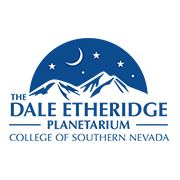
On February 13, the Dale Etheridge CSN Planetarium held its first spring semester show at the North Las Vegas CSN campus. The show consisted of Pink Floyd’s album ‘Dark Side of the Moon’ playing while paired with stunning visuals of space.
From the moon to NASA’s space station to the rings of Saturn and Mars, one can see the crisp details on display wherever seated in the Planetarium. The visuals and music together trigger specific thoughts and paradoxes that can leave one in a different mindset walking out after the show.
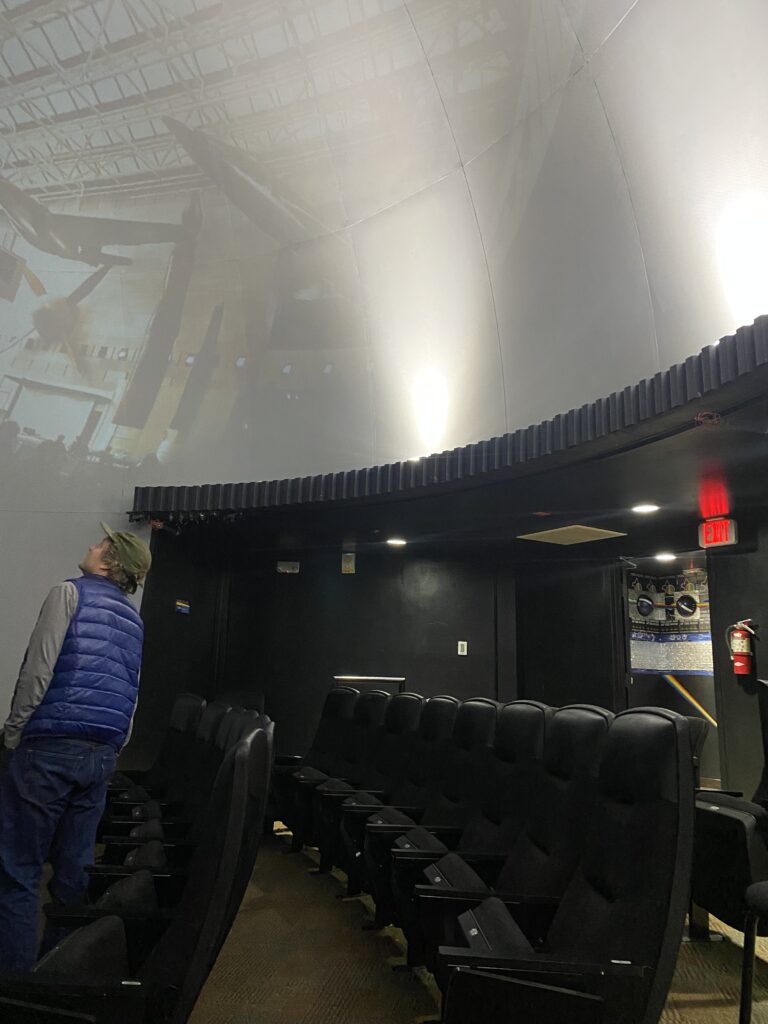
Visuals of the CSN Planetarium Show
The visuals presented during the show encourage emotions aligned with the music in surround sound, entering one’s ears as the visuals play in an extremely dark room. The combination of senses could cause motion sickness in some prone to that feeling when in an all-encompassing setting. The iconic pyramid on the cover, designed by Storm Thorgerson, is present throughout the show.
The stunning close-ups presented in the images of a NASA astronaut, NASA’s space station, and space itself include details that one might only see in a planetarium. This imagery included incredible visuals of Saturn, meteors, Mars-like surroundings, and sandstorm weather overtaking a NASA astronaut who continues walking throughout the red planet. Not to mention the visuals of the gears on a clock matching the intro to the song ‘Time.’
When asked about his favorite part of the show, CSN Planetarium Manager Dr. Andrew W. Kerr spoke about the emotional climax.
“It’s during the song ‘Dark Side of the Moon’ [when] they’re showing lunar landers getting ready to land, and it’s the first time singing ‘I’ll see you on the dark side of the moon.’” Dr. Kerr pondered a few seconds to gather the words to match the feeling and said, “It just pushes up all the emotion in me and everything like that. It really just is an incredible climax to the whole thing.”
Extraordinary surround sound transports one into the solar system, the galaxy, and time itself, speaking very much to the human experience. When one doesn’t know where to look, one could say the stars are a better view than the ground.
The ‘Dark Side of the Moon’ Experience
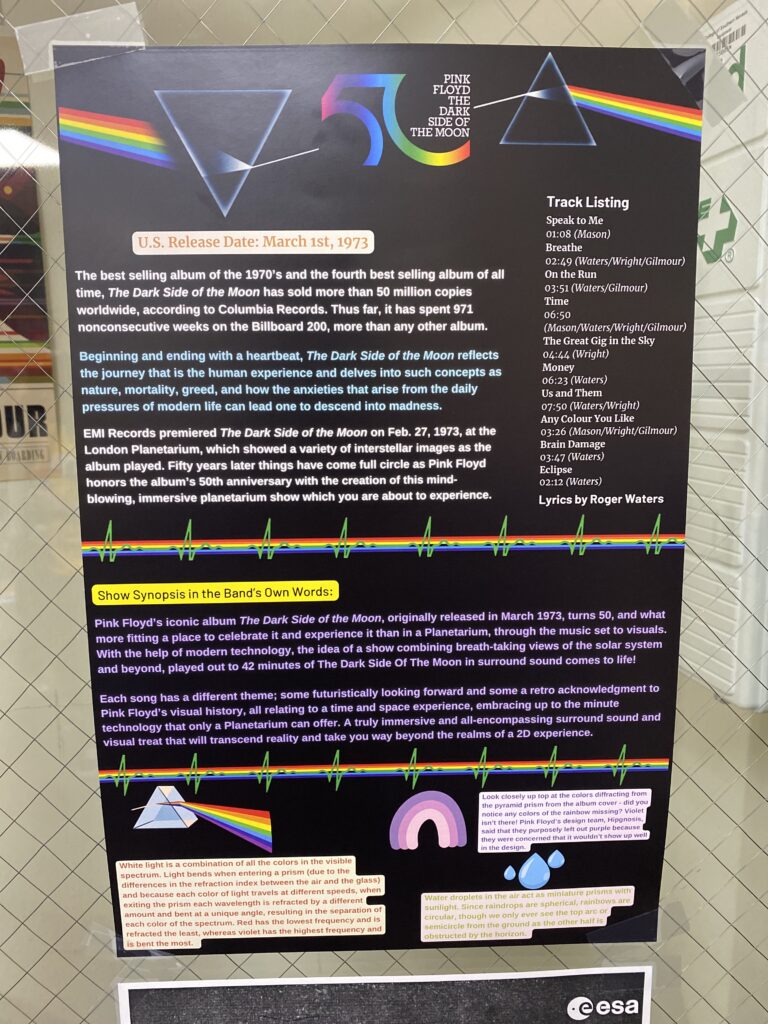
A poster near the entrance provides background information about the album before entering the planetarium. It’s a brief and concise explanation of what the album reflects: the journey that is the human experience. In addition, it displays the concepts of nature, mortality, greed, and anxieties that come from living in the modern world, which could lead one astray and into madness.
It’s hard not to identify these themes as they tie in and return throughout the album’s listening, especially the heartbeat at the beginning and end. Those 43 minutes’ journey returns to the essence of the human experience. One will continue to live on with one’s heartbeat still beating.
Some of the songs on the album don’t need words to express those themes, for example, ‘The Great Gig in the Sky.’ Moreover, there are reminders of just being a human in ‘Breath’ and ‘Us and Them.’ The sounds mixed with certain emotions brought together with the closing poetic image the ‘Eclipse’ conjures up in the listener.
It’s intriguing to think that the album’s imagery, words, and sounds still mean just as much or even more today and still mean just as much or even more, depending on who you ask. Sounds from the past bring insight. One might ask if things have changed since then. What’s the good and bad, where are we heading, and should we look back?
The Paradox of the Album and the Show
The lyrical imagery portrayed by Roger Waters could inspire one to look left and right in one’s everyday routine, while the show’s images could cause one to look ahead into what could be. It’s just for the person experiencing the paradox to decide.
“Paradox is a very good way of putting it. Because it’s seemingly multiple things all at once, it’s kind of a way of looking at it as quantum mechanics, to a certain extent,” Dr. Kerr then elaborated on how the visuals tell one story while the album tells another, thus leading to the word paradox. “And so there is a little bit of a paradoxical idea to what you’re seeing. It gnaws at your brain when you get down to it because what you’re seeing and what you’re hearing doesn’t exactly line up. But it doesn’t not line up at the same time.”
Dr. Kerr then spoke about how Pink Floyd and many other bands from past decades tried to add subtext to what was in the music to say something meaningful.
“… Especially with this show, Dark Side of the Moon. You can really see how that actually works, to a certain extent,” Dr. Kerr said. “And using the word paradox for it is actually fairly appropriate because, yeah, it holds many different meanings at the same time, and it’s just really cool.”
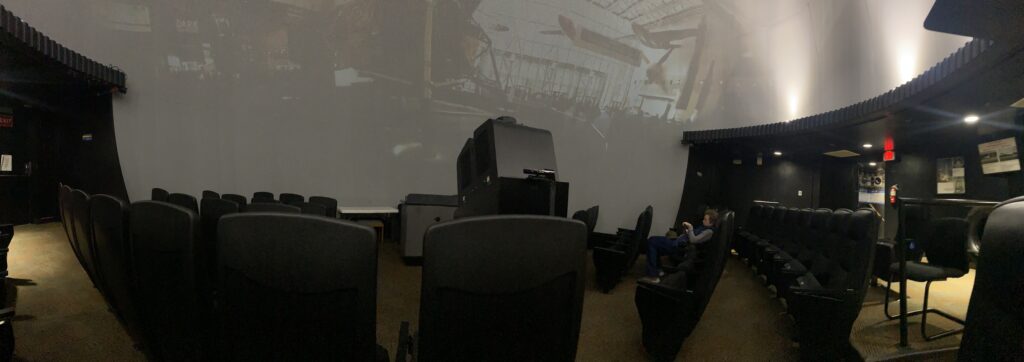
(Article continues after the ad)
Please follow our fantastic site sponsors! They make content like this possible! 🙂
Pink Floyd’s ‘Dark Side of the Moon’ at 51 years
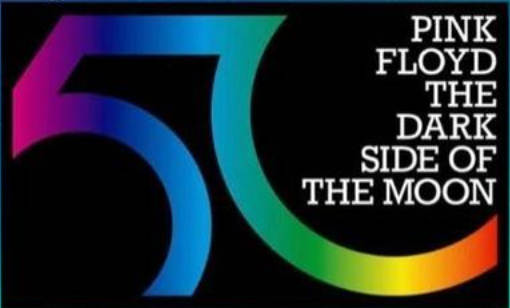
Pink Floyd is an English rock band that formed in London in 1965. It is one of the first British psychedelic groups. The band has made several albums that have seen great critical and commercial success, with “Dark Side of the Moon” being one of them. It has sold over 50 million copies worldwide since its release, and it is the fourth best-selling album of all time.
The themes in the album and the visuals provide insight into many different perspectives. Recorded in 1973, the album and the meaning behind the lyrics still resonate to this day. Fifty years later, the impact continues to hold and be listened to throughout multiple generations. The meaning of the words and emotions from the music of the songs surround the planetarium with the visuals, looking forward to the future while still looking back.
An example of this juxtaposition is referencing an album from 1973 and then displaying the album on a gold disk resembling the records on Voyager 1 and 2 back in 1977. One might connect a combination of themes: past, present, future, economic turmoil, looking forward to things to come, and considering the human condition.
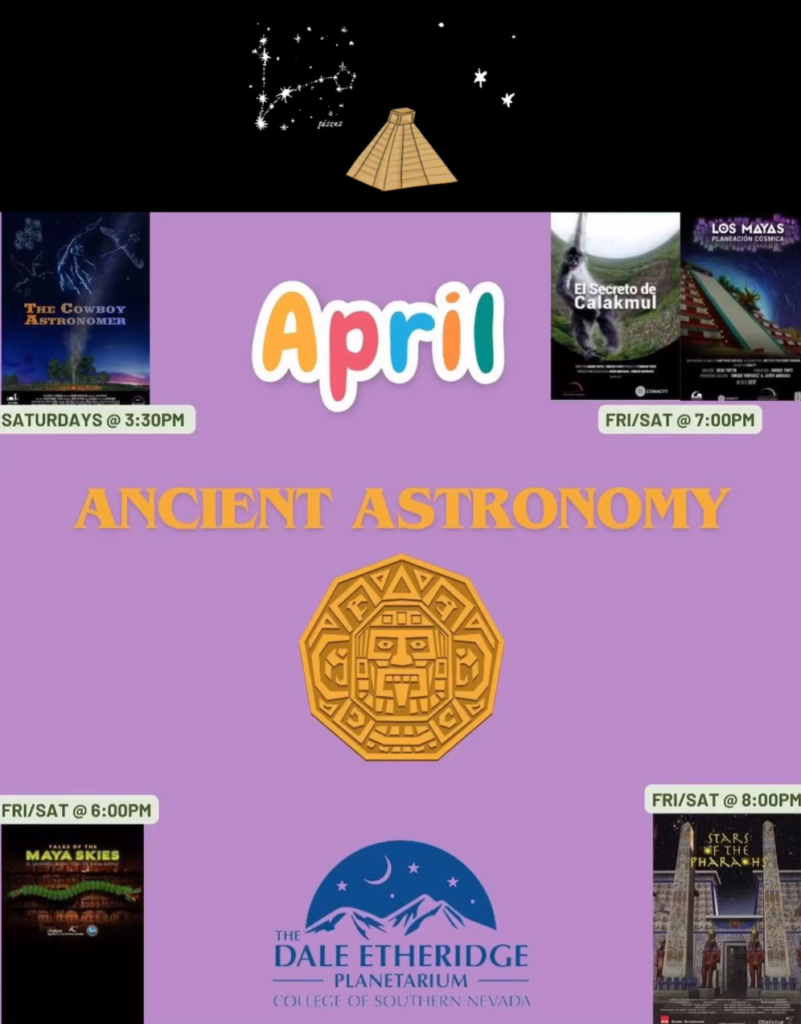
#GetinMotion with the CSN Planetarium
Although the last showing of ‘Dark Side of the Moon’ was on March 25, the Dale Etheridge Planetarium hosts other shows and events throughout the year! It screens these shows at the CSN campus on 3200 East Cheyenne Avenue every Friday and Saturday. They also host ‘Meditation Mondays’ that occasionally include sound baths and do special events like their coverage of the recent total solar eclipse.
This month’s offerings include ‘Cowboy Astronomer, ‘Tales of the Maya Skies,’ The Secret of Calakmuland, ‘The Mayans Cosmic Planners,’ and ‘Stars of Pharaohs.’
Tickets are available for just $6 on the CSN Planetarium website. Follow them on Facebook, Instagram, and Twitter to keep up with the latest news and events at the Dale Etheridge Planetarium.
In addition, the Las Vegas Astronomical Society (LVAS) also regularly hosts events at the planetarium.
Thank you to our supporters and sponsors!
As always, we want to thank our Patreon ‘Cultivator’ supporters and sponsors who help make content like this possible.
The following Patron(s) supported the production of this article:
Crystal Gropp
The following sponsors supported the production of this article:
Viva La Compost & LunaKai Lash



